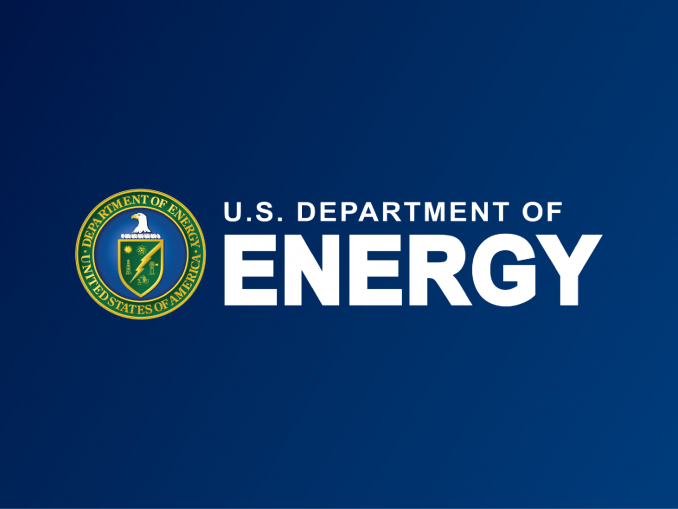
WASHINGTON, D.C. — The U.S. Department of Energy (DOE) today released details for 35 projects across 20 states that voluntarily shared with DOE they received a total of $1.93 billion in allocations of the Qualifying Advanced Energy Project Credit (48C). 48C is an allocated tax credit funded by President Biden’s Investing in America agenda through the Inflation Reduction Act, aimed at accelerating clean energy manufacturing and recycling and reducing greenhouse gas emissions at industrial facilities.
The projects announced today are addressing critical needs across the clean energy economy, including grid components (e.g., transformers), electric vehicle components and chargers, solar components, clean steel, critical materials processing and recycling, and other clean energy products. Seven of the projects announced today are located in traditional energy communities, which include communities with closed coal mines or coal plants – advancing the President’s commitment to invest in the communities that have kept America’s economy powered for generations. In order to receive the full 30 percent investment tax credit, projects receiving a 48C tax credit must meet prevailing wage and registered apprenticeship requirements.
“The Biden-Harris Administration is executing an industrial strategy that prioritizes rebuilding our domestic manufacturing sector, creating good-paying jobs across the country,” said U.S. Secretary of Energy Jennifer M. Granholm. “Through the historic Advanced Energy Project Credit, we are leveraging the infrastructure, expertise, and grit of America’s energy communities—where the workers that powered our energy past, will power our energy future.”
“President Biden’s economic agenda ensures all communities benefit from the growth of the clean energy economy by driving innovation and investment in areas of the country that have long been at the forefront of fossil fuel production,” said U.S. Secretary of the Treasury Janet Yellen. “Investments in advanced energy projects strengthen our energy security and create good-paying jobs in vital fields like clean energy manufacturing and critical materials processing. They also allow for existing energy infrastructure to be upgraded for the clean energy economy. All of this work will help lower energy costs for American families and small businesses.”
“President Biden is committed to building a clean energy economy that is bringing investments and jobs to the same communities that have powered our nation for over a century with fossil fuels,” said John Podesta, Senior Advisor to the President for International Climate Policy. “Today’s announcement of projects coming forward to share their participation in the 48C Qualifying Advanced Energy Program represents a direct, targeted investment in those energy communities and manufacturing across the nation so they can power our country for the next century.”
The IRA expanded the Qualifying Advanced Energy Project Credit (48C) to provide an additional credit allocation of $10 billion, with $4 billion set aside for projects in designated energy communities. The 48C credit is an investment tax credit of up to 30% of qualified investments for qualifying projects, provided they meet prevailing wage and apprenticeship requirements.
On March 29, 2024, the IRS allocated approximately $4 billion of 48C credits for over 100 projects across 35 states, with approximately $1.5 billion allocated to projects in designated energy communities. As required by statute, the 48C(e) program can release the names of all organizations allocated a credit and the amount of that allocation only after projects are certified, a process that can take up to two years. In advance of that certification, as of April 18th, 35 projects voluntarily self-disclosed information to DOE to share publicly as part of today’s announcement.
Clean Energy and Clean Vehicle Manufacturing
Fourteen projects will expand the manufacturing of clean energy products and materials to bolster energy security and increase economic competitiveness. These projects will include new and expanded facilities to produce products ranging from electric vehicle chargers, recycled glass and polysilicon for solar panels, and steel needed for offshore wind projects. These projects include:
- Highland Materials, Inc, Surgoinsville TN. This project, which is located in an Energy Community, will initially produce 16,000 Metric Tons per year (MT/year) of solar grade polysilicon at less than standard cost and with a 90% reduction in carbon emissions. At full capacity, it will produce 20,000 MT/year – the equivalent of 11 GW of solar cells. Highland is working closely with Northeast State Community College to develop and implement workforce development including DOL certified apprenticeship programs, along with other community support programs designed to support our workforce and the community at large. [Credit Amount: $255.6 Million]
- Mobis North America electrified Powertrain, LLC (MNAe), Richmond Hill GA. MNAe will be constructing three different electric vehicle component plants that will provide parts to the production of Hyundai and Kia electric vehicles. The awarded plant, located in Richmond Hill, will specifically produce Power Electric Systems (“PE System”) which are integral to the production of electric vehicles. [Credit Amount: $57.6 Million]
Grid Components and Modernization
Eight projects will produce critical grid components needed to bolster grid resiliency and overcome supply chain constraints to upgrading the grid, including large power transformers, grid scale batteries, substation electrical transformers, voltage regulators, and belowground and underwater electrical cables. These projects include:
- Eaton Corporation, Waukesha WI. This project will increase manufacturing capacity for three-phase transformers used for utility power grids, data centers, and other large commercial and industrial applications. This equipment will provide critical support for electric grid resilience, renewable energy projects and electric vehicle (EV) charging stations. Eaton works closely with Waukesha County Technical College (WCTC) to create education and training programs for manufacturing careers, including coil winding. [Credit Amount: $1.33 Million]
- Prysmian, Williamsport PA. This project will reequip and expand an existing facility to increase manufacturing capacity of advanced transmission conductors, enabling production of thousands of metric tons per year. The conductors are expected to supply the Grain Belt Express project, a long-distance high-voltage direct-current transmission line project to deliver more affordable, reliable, and domestically sourced clean electricity to the Midwest. [Credit Amount: $3.89 Million]
Critical Minerals and Materials
Five projects will increase the U.S. production and refinement of critical minerals and materials needed to support the manufacturing of materials like electrical steel, lithium carbonate, and synthetic graphite. Projects will also include facilitating the recycling of lithium-ion batteries and black mass, ensuring critical minerals stay in the country for reuse and long-term supply chain and energy security. These projects include:
- ArcelorMittal Calvert LLC, Calvert AL. This new advanced manufacturing facility in an Energy Community will produce high-quality non-grain oriented electrical steel (NOES). NOES is a critical material for production of electric motors used to power battery electric vehicles, plug in hybrid electric vehicles and hybrid vehicles, and other clean energy technologies. ArcelorMittal Calvert will partner with local educational and training institutions to develop tailored workforce development programs to meet the workforce needs. [Credit Amount: $280.5 Million]
- Nth Cycle Inc., Fairfield, OH. This facility will provide the nation’s first large-scale production of Mixed Hydroxide Precipitate (MHP), and will make use of recycled and scrap materials from Li-ion batteries, spent catalysts and alloy scraps and slags. The process will provide critical nickel and cobalt materials for EV battery production. [Credit Amount: $722.12 Million]
Industrial Decarbonization
Eight projects will reduce emissions at existing industrial facilities or accelerate the manufacturing of clean hydrogen and low carbon fuels, including the manufacturing of electrolyzers, to facilitate the decarbonization of essential, energy-intensive sectors like steel and cement. These projects include:
- Middlesex County Utilities Authority, Sayreville NJ. This project will increase the efficiency of a solid waste handling process of wastewater treatment through a new Advanced Anaerobic Digestion Facility, increasing use of renewable energy and reducing emissions by approximately 23%. The project’s construction contracts will include project labor agreements, support apprenticeships, and engage with businesses owned by minorities, women, veterans, and local small business owners. [Credit Amount: $40.5 Million]
- Topsoe SOEC Production US Inc., Chester VA. This project will significantly expand U.S. electrolyzer manufacturing capacity, helping to meet the growing demand for green hydrogen. Electrolyzers are key for decarbonizing energy-intensive industries like steel, mining, and long-distance transportation, which account for approximately 30% of global greenhouse gas emissions. [Credit Amount: $135.9 Million]
See the full list of projects here.
Workforce and Community Benefits
These projects will help create more pathways for training and employment in the clean energy and manufacturing sectors and ensure that communities that traditionally powered our nation reap the economic benefits of the clean energy economy. For example, projects are partnering with a variety of training and education organizations (e.g., community colleges, colleges, career technical centers) to develop a skilled workforce. Community benefit agreements, project labor agreements and impact agreements that identify specific benefits for workers and local communities are being utilized within the portfolio. Projects also must meet prevailing wage and registered apprenticeship requirements to receive the full value of their 48C allocation.
The U.S. Department of Treasury and Internal Revenue Service anticipate issuing guidance for the second round of the 48C program in the coming weeks, with a submission window for required concept papers anticipated to open by this summer.
Companies that wish to be publicly listed by Department of Energy as recipients of the 48C program may submit their opt-in form to the Department of Energy to be featured in ongoing announcements. Learn more about the Qualifying Advanced Energy Project Credit (48C), which is managed by DOE’s Office of Manufacturing and Energy Supply Chains.








